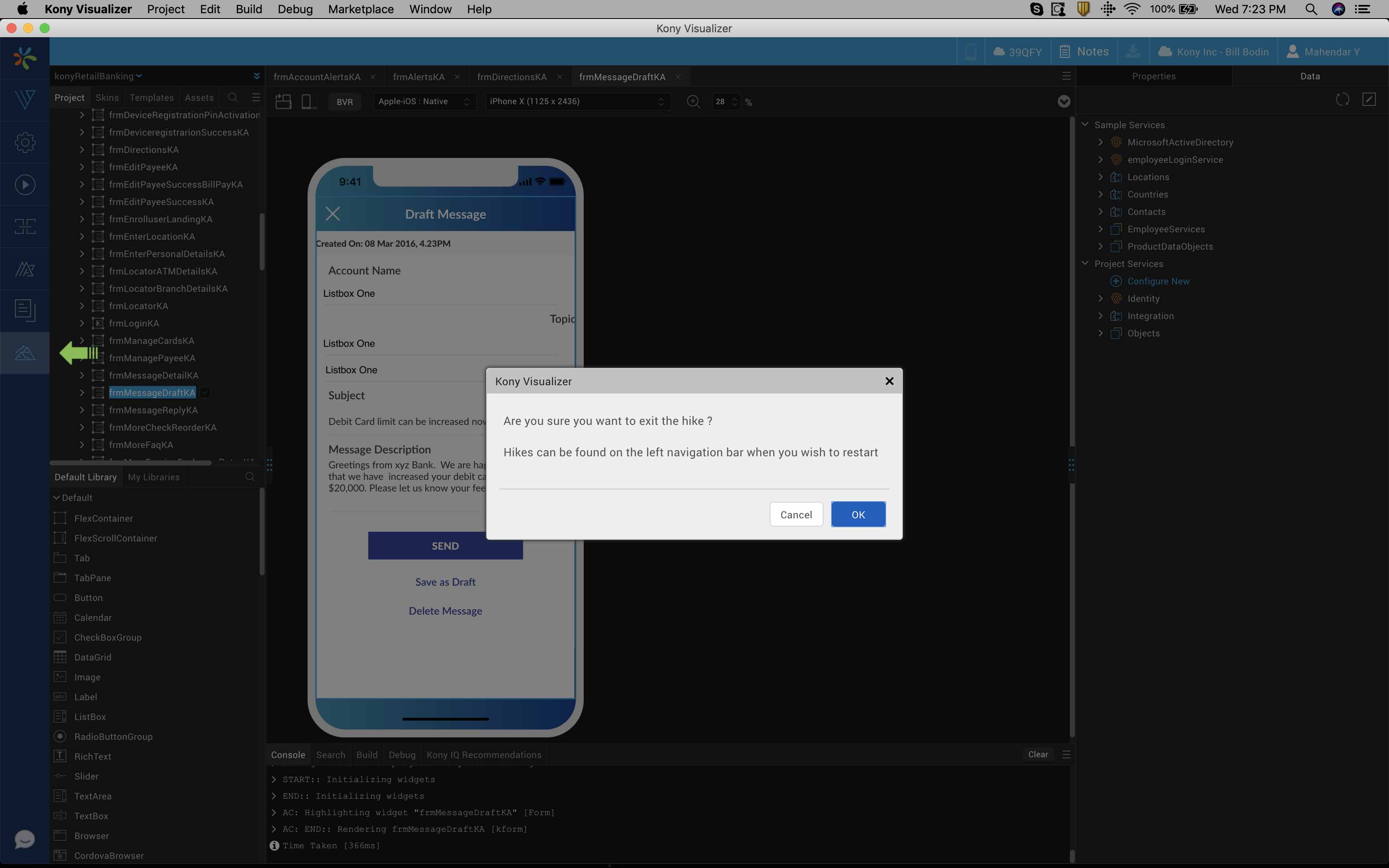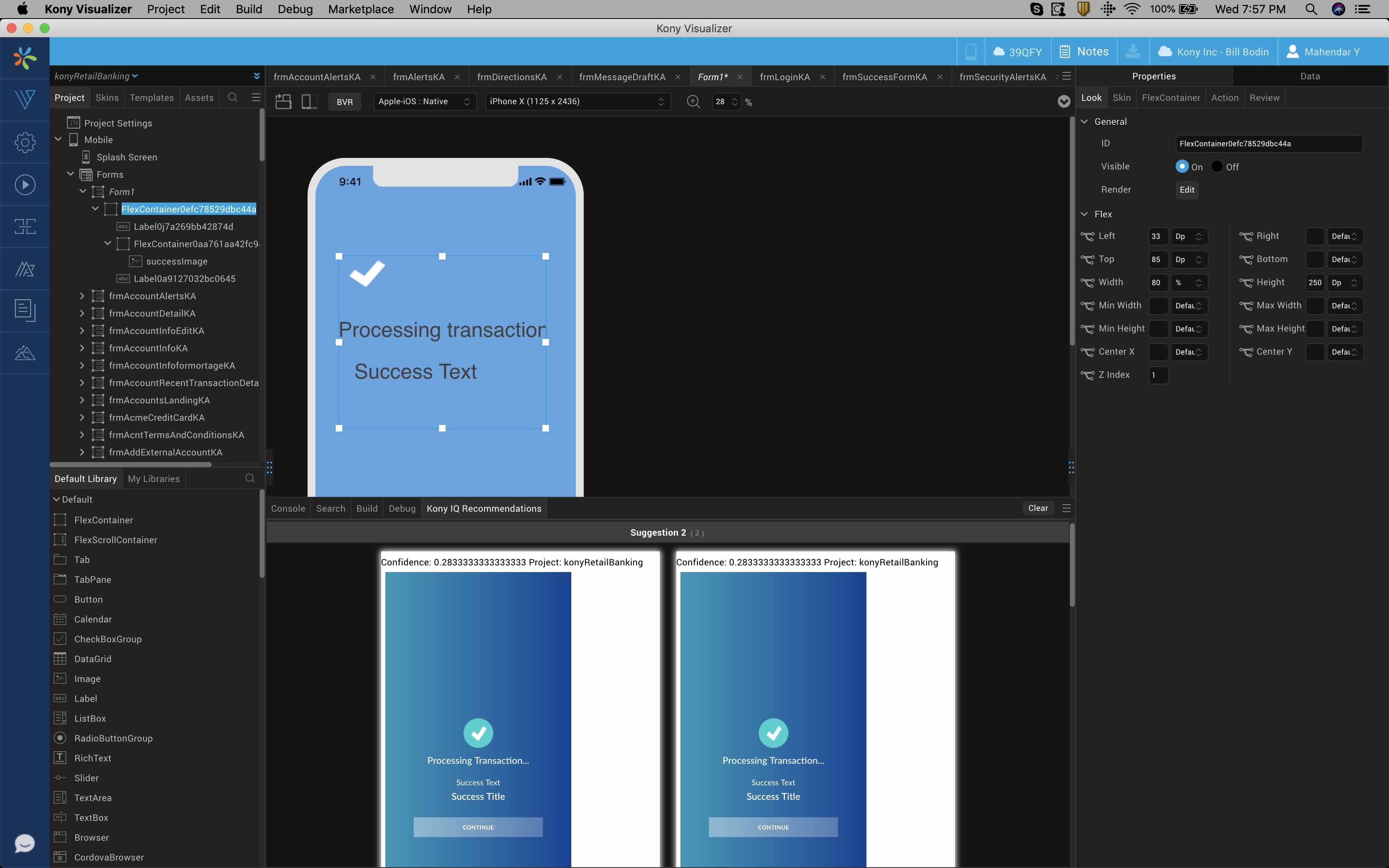Kony Quantum Marries Low-Code with AI, Interactive Guides; Move Aims To Tackle Wider Spectrum of Digital Innovation
Kony wants to make it easier for more developers to create impactful cloud apps. The Kony Quantum cloud-based platform unites low-code IDE with rich backend services, AI, interactive guides, and quick provisioning. IDN takes a tour with Kony’s Burley Kawasaki.
by Vance McCarthy
Tags: AI, Azure, cloud native, DevOps, developer, integration, Quantum, Kony, low-code,

executive vp, products

"This broader vision for low-code is important because we’re seeing our customers trying to build a wide range of apps – from simple to really complex, mission-critical ones."
 Modern Application Development for Digital Business Success
Modern Application Development for Digital Business SuccessKony is simplifying the ability to build hybrid and cloud-native apps with an enriched end-to-end app platform for design and deployment.
Kony Quantum, in the works for more than a year, is a cloud-based platform that brings together low-code, AI/ML, interactive multi-media guides, near-seamless provisioning, auto-scaling, and DevOps support.
The new platform leverages and updates Kony’s long-standing visual designer and backend services technologies for cloud-driven digital innovation, Kony’s Burley Kawasaki, executive vice president for products told IDN.
Just last month, a version of Kony Quantum for Microsoft Azure came available. It allows companies to quickly and simply build new apps and run them at scale within Azure’s global cloud infrastructure -- across North America, Europe, and Asia.
Notable features in Kony Quantum for Azure include:
- New Docker/Kubernetes based container architecture
- Full monitoring, logging and integrated APM (Application Performance Monitoring) support
- High availability deployment options across multi-availability zones
- Availability in the United States, Europe, and Asia regions
In further support of the Kony-Microsoft partnership, Kony Quantum also plans to integrate with Power BI for advanced self-service analytics by mid-2019, Kawasaki added.
Kony Quantum for Azure has been certified for ISO 27001, SOC2 Type II and PCI DSS, Kawasaki said, noting the importance of security and privacy to cloud-centric apps.
“The Kony and Microsoft Azure relationship are particularly important for customers in highly regulated industries in which compliance, security, and risk analysis are paramount,” he said.
Under the Microsoft Azure partnership, “Kony will access Azure’s large global alliances network, while leveraging its compliance portfolio, enterprise-grade service level agreements, and industry-leading support. This extends the effortless security and protection built into the Kony Quantum platform, which enables multi-layered security that defends against compromise and detects and reacts to attacks with application and identity protection,” Kawasaki added.
Microsoft’s Toby Richards, general manager of partner GTM programs, said Kony Quantum for Microsoft Azure will help customers “significantly decrease their time to market,” adding Kony’s platform “allow[s] customers to harness the flexibility and enterprise-grade reliability that Azure provides.”
Inside Kony Quantum – Marrying Low-Code, AI, Interactive Guides & App Pipelines
Kony Quantum aims to push the envelope for low-code, with a rich set of intuitive features to optimize an end-to-end platform for building, testing and delivering innovative hybrid and cloud-native apps, Kawasaki said.
In fact, one could say Kony Quantum has a two-tier vision.
First, and most importantly, is to “speed up delivery and lower complexity” of apps, Kawasaki said - especially to help lesser-skilled developers build and provision impactful apps.
“If you were an API ninja or a backend integration expert, you appreciated the full power of Kony’s architecture – with API management, objects services, and powerful integration. But a lot of companies don’t have savvy API ninjas, so Kony has abstracted the complexity (without watering down the functionality) to make Kony’s technologies more accessible to any-level developer, even newbies.

Show hike pointer – Illustrates the ability to animate all areas of the IDE, providing for completely guided experiences
To open up Kony’s app development to lesser experienced developers, Kony Quantum’s IDE ties its low-code visual environment in with a rich set of backend services, objects, and APIs – all invisibly, Kawasaki said.
Second, Kony Quantum aims to raise the bar on low-code, allowing low-code to drive a broader range of apps – from simple, long-tail web apps to a wider range of complex, innovative ones, Kawasaki added.
“Low code has been a buzzword for a while, but it’s a grown to be a broader term to describe a full web and mobile design experience that can offer rapid app development across a wide spectrum of application types,” he told IDN.
“This broader vision for low-code is important because we’re seeing our customers trying to build a wide range of apps – from simple web apps to really complex, mission-critical ones for employees and customers. That’s why we’ve designed Kony Quantum to be a low-code platform to straddle both ends of that continuum – something we call low-code without limits,” he said.
To get there, Kony Quantum marries low-code with a mix of novel capabilities to better make low-code smarter, richer and more responsive and intuitive to help developers – no matter their skill level -- better navigate tricky or time-consuming tasks. Kawasaki added.
To broaden the reach of ow-code, Kony Quantum infuses low-code with a number of new features. Among them:
Low-code, Automated Integration - A ‘Data Panel’ speeds up integration to backend systems and automatically provides test services to develop against stubs -- even when the backend is unavailable. This Data Panel means Kony Quantum automates many of the integrations and/or linkages between front-end apps and backend APIs and objects.
“In effect, our Data Panel lets a front-end developer access APIs and backend services without knowing the details,” Kawasaki said. This type of front end-backend linking traditionally can take a lot of deep expertise in APIs and integration he added, “But now with Kony Quantum, basically you can do all the things you need right from the IDE, without having to [do deeper coding] that experienced developers would do to pull it all together.”
AI Assisted Development – Kony Quantum also embeds AI and machine learning capabilities inside the tool. This means Kony Quantum tooling is actively looking to present developers suggestions or opportunities to avoid coding altogether.
“Our AI agent does tasks for you, so you don't have to write a lot of plumbing. This is great for lesser-skilled developers. As soon as a developer starts to use the tool, we will try to identify what the developer is in the process of building,” Kawasaki told IDN. As an example, he pointed to a login screen – something every app has. Quantum can identify if there is already something that exists that I could reuse from the platform. Or it might even go outside [the Kony environment[ and suggest a third-party service we could use, rather than code,” he added.
Kony’s AI-assist capabilities aren’t simply guesses, Kawasaki noted. “This AI is based on real learnings from about 100,000 developers out there. Because we’re in the cloud, we are able to learn collectively and with high quality,” Kawasaki added.
Kony is planning to continuously expand and update these AI auto-assist features, he added. “And as we open this capability up more broadly - and our ecosystem starts using it -- we will constantly be looking to identify and understand new components and patterns of use to make the tool even smarter.”
But all this automated help doesn’t take any hand-coding options away from more experienced developers, he added. “They can still go down in the code and do as much as they want by hand on their own.”
Interactive Guides - Kony Quantum IDE also sports a range of new interactive Learning System to speed the learning curve for all users.
“Let’s say I'm using a speech recognition component from the [Kony] Marketplace I've never used it before. The first time I drag-and-drop that into my project, our interactive learning will take me on a guided tour through the tools themselves. It will show me just-in-time how to use it, click by click,” Kawasaki said.
More than a traditional wizard, the idea is for Kony Quantum’s interactive Learning System to know at what stage a developer is in the task -- and offer users help to get to the next step, including rich media or pop-up video clip to show users just where to click and what to do next, Kawasaki said.
Kony’s learning systems also tap into the AI-assist feature so it can trigger specific decisions or questions based on a users’ individual task to guide the user to the next step for the desired outcome, he added.

Pattern Recommendation – Identifies the components a user is creating and matches that to pre-existing component
Kony Quantum Also Adds Features for Experienced App Developers
For all the help Kony Quantum offers novice or lesser-skilled developers, the platform also sports helpful features for the experienced developer.
Notable is Kony Quantum’s support for more seamless, automated DevOps.
Kony Quantum includes what it calls “an automated cloud build service,” which Kawasaki said removes the need for local SDKs or build machines. It also sports a ‘one-click publishing’ feature for web or mobile apps to place them in a secure, private Enterprise App Store service.
“We've taken eight or ten different complex steps that you would have to do normally if you were to build this manually -- and we do them all automatically for you,” Kawasaki said. This is all due to a mix of AI, automation and cloud services that Kony Quantum offers under-the-covers.
Kawasaki shared a practical example of how Kony Quantum automates an app pipeline:
“When doing a cloud build, normally a developer would have run the build on a Mac or Windows machine or local PC. So, you would need to get the IPA or the binaries and you would have had to drop them off to someplace to share them with your end-users and get their feedback. We pull all that functionality into the cloud, and it’s all completely automated, Kawasaki said.
In the cloud, Kony Quantum has a fully hosted farm of both Mac machines (and Android machines), pre-set to work with app work products. “These will run all the appropriate compilers, the SDKs, and so on. They [systems] will build the app for you. So, the full DevOps and CI/CD pipeline is actually happening in our cloud. So, we’re doing all that work for you, but you don’t need to worry about all the details,” he added.
Beyond building the app, Kony Quantum’s use of the cloud also makes it easy to publish and share. “We automatically can push [an app] into our new cloud-hosted Enterprise App Store service. That way, all users have to do to review an app is to go to their app store client - which is just a web app - and they can see the app that you published,” Kawasaki said.
In support, Kony has also expanded from single tenant to a fully multi-tenant shared service.
Kony Quantum also adds support for react native developers. “Developers can import and bring in react native libraries directly into the IDE. It can also output binary sort of files think of dlls. So, Kony’s support for react native works both ways” into and out of the Kony Quantum platform, he said.
“A lot of developers have made bets on different popular frameworks, so we continue to support those choices,” Kawasaki said, noting Kony’s existing support for web and JavaScript frameworks.
Related:
- InfluxData's Latest Updates Optimize Time Series Data for Better Performance, Scale and Management
- Actian Zen 16.0 Update Simplifies Delivery and Boosts Performance of Edge, IoT Apps
- Virtana Infrastructure Performance Management Adds AI-driven Capacity Planning
- e2open’s Supply Chain SaaS Updates Help Firms Reduce Operational Risks with Deeper Visibility
- Report: Endor Labs Identifies 2023 Operational, Security Risks To Open Source
All rights reserved © 2025 Enterprise Integration News, Inc.


